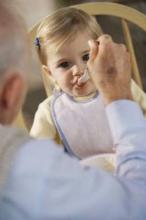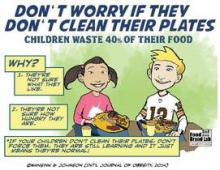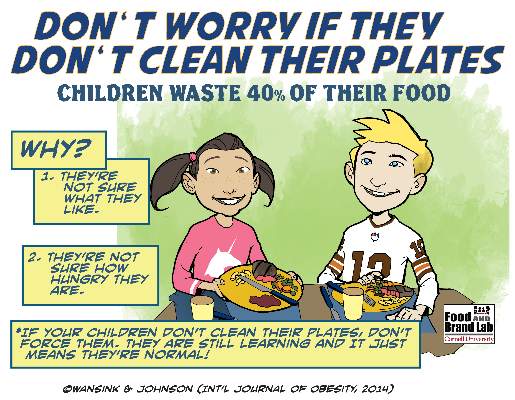User login
Beware of high blood pressure
High blood pressure may not have any symptoms except in the most extreme cases, but the effect it can have on the human body is real and severe.
The only symptom of high blood pressure is a very serious condition known as hypertensive crisis, which occurs only when blood pressure rises over 180/110 mm Hg. This condition requires immediate medical attention. High blood pressure can cause a series of other serious health issues, such as damage to the heart and arteries, stroke, kidney damage, vision loss, erectile dysfunction, memory loss, angina, and peripheral artery disease.
High blood pressure in combination with other risk factors such as age, heredity, gender, obesity, smoking, high cholesterol, diabetes, and physical inactivity can further increase risk of major health issues. Diet and exercise changes, however, can help lessen that risk.
Learn more at the American Heart Association website.
High blood pressure may not have any symptoms except in the most extreme cases, but the effect it can have on the human body is real and severe.
The only symptom of high blood pressure is a very serious condition known as hypertensive crisis, which occurs only when blood pressure rises over 180/110 mm Hg. This condition requires immediate medical attention. High blood pressure can cause a series of other serious health issues, such as damage to the heart and arteries, stroke, kidney damage, vision loss, erectile dysfunction, memory loss, angina, and peripheral artery disease.
High blood pressure in combination with other risk factors such as age, heredity, gender, obesity, smoking, high cholesterol, diabetes, and physical inactivity can further increase risk of major health issues. Diet and exercise changes, however, can help lessen that risk.
Learn more at the American Heart Association website.
High blood pressure may not have any symptoms except in the most extreme cases, but the effect it can have on the human body is real and severe.
The only symptom of high blood pressure is a very serious condition known as hypertensive crisis, which occurs only when blood pressure rises over 180/110 mm Hg. This condition requires immediate medical attention. High blood pressure can cause a series of other serious health issues, such as damage to the heart and arteries, stroke, kidney damage, vision loss, erectile dysfunction, memory loss, angina, and peripheral artery disease.
High blood pressure in combination with other risk factors such as age, heredity, gender, obesity, smoking, high cholesterol, diabetes, and physical inactivity can further increase risk of major health issues. Diet and exercise changes, however, can help lessen that risk.
Learn more at the American Heart Association website.
Pediatric pill swallowing interventions effective
For children as young as 2 years old, interventions such as behavioral therapy, flavored throat spray, a specialized pill cup, simple verbal instructions, and head-posture training were successful in improving pill swallowing abilities for more than half of the study population, according to the results of a data review published in Pediatrics.
Amee Patel, M.P.H., and her associates at the University of North Carolina at Chapel Hill, examined data from 211 articles identified in a PubMed search published between December 1986 and December 2013. Four cohort studies and one case series met the criteria for inclusion. Each of the studies concluded that pill acceptance rates were improved shortly after their intervention, with three studies reporting pill acceptance continuing for 3-6 months after the intervention.
“A major reason for the success of all the interventions is that every study recognized and specifically addressed problems with pill swallowing. As a result, there was a conscious effort to help children with their difficulties in swallowing pills,” the investigators wrote.
Read the entire article here: Pediatrics 2015 (doi: 10.1542/peds.2014-2114).
For children as young as 2 years old, interventions such as behavioral therapy, flavored throat spray, a specialized pill cup, simple verbal instructions, and head-posture training were successful in improving pill swallowing abilities for more than half of the study population, according to the results of a data review published in Pediatrics.
Amee Patel, M.P.H., and her associates at the University of North Carolina at Chapel Hill, examined data from 211 articles identified in a PubMed search published between December 1986 and December 2013. Four cohort studies and one case series met the criteria for inclusion. Each of the studies concluded that pill acceptance rates were improved shortly after their intervention, with three studies reporting pill acceptance continuing for 3-6 months after the intervention.
“A major reason for the success of all the interventions is that every study recognized and specifically addressed problems with pill swallowing. As a result, there was a conscious effort to help children with their difficulties in swallowing pills,” the investigators wrote.
Read the entire article here: Pediatrics 2015 (doi: 10.1542/peds.2014-2114).
For children as young as 2 years old, interventions such as behavioral therapy, flavored throat spray, a specialized pill cup, simple verbal instructions, and head-posture training were successful in improving pill swallowing abilities for more than half of the study population, according to the results of a data review published in Pediatrics.
Amee Patel, M.P.H., and her associates at the University of North Carolina at Chapel Hill, examined data from 211 articles identified in a PubMed search published between December 1986 and December 2013. Four cohort studies and one case series met the criteria for inclusion. Each of the studies concluded that pill acceptance rates were improved shortly after their intervention, with three studies reporting pill acceptance continuing for 3-6 months after the intervention.
“A major reason for the success of all the interventions is that every study recognized and specifically addressed problems with pill swallowing. As a result, there was a conscious effort to help children with their difficulties in swallowing pills,” the investigators wrote.
Read the entire article here: Pediatrics 2015 (doi: 10.1542/peds.2014-2114).
Patient fact sheet on the risks of pneumococcal disease
The National Foundation for Infectious Diseases offers basic information to share with patients about the risks of pneumococcal disease and the importance of vaccination in at-risk adults and adults over age 65. Get the facts and a handy information sheet for your patients at their web site.
The National Foundation for Infectious Diseases offers basic information to share with patients about the risks of pneumococcal disease and the importance of vaccination in at-risk adults and adults over age 65. Get the facts and a handy information sheet for your patients at their web site.
The National Foundation for Infectious Diseases offers basic information to share with patients about the risks of pneumococcal disease and the importance of vaccination in at-risk adults and adults over age 65. Get the facts and a handy information sheet for your patients at their web site.
Patient handout on the importance of vaccines
The Immunization Action Coalition offers a single-page handout for adult patients on the need for vaccinations and emphasizes that "getting immunized is a lifelong, life-protecting job." To access a copy of the handout for your adult patients, click here.
The Immunization Action Coalition offers a single-page handout for adult patients on the need for vaccinations and emphasizes that "getting immunized is a lifelong, life-protecting job." To access a copy of the handout for your adult patients, click here.
The Immunization Action Coalition offers a single-page handout for adult patients on the need for vaccinations and emphasizes that "getting immunized is a lifelong, life-protecting job." To access a copy of the handout for your adult patients, click here.
Vaccine storage and handling toolkit
The Vaccine Storage and Handling Toolkit is based on the recommendations of the Advisory Committee on Immunization Practices (ACIP), the manufacturer's product information and studies from the National Institute for Scientific Technology (NIST). Click here to view or print a free copy of the Toolkit.
The Vaccine Storage and Handling Toolkit is based on the recommendations of the Advisory Committee on Immunization Practices (ACIP), the manufacturer's product information and studies from the National Institute for Scientific Technology (NIST). Click here to view or print a free copy of the Toolkit.
The Vaccine Storage and Handling Toolkit is based on the recommendations of the Advisory Committee on Immunization Practices (ACIP), the manufacturer's product information and studies from the National Institute for Scientific Technology (NIST). Click here to view or print a free copy of the Toolkit.
Prepackaged toddler foods often contain too much salt and sugar
Need another reason to make your toddler dinner instead of feeding him a prepackaged meal? New research shows a large number of dinners, snacks, and desserts sold in the United States that are designed for toddlers contain added sugar and salt, leaving them at risk for developing hypertension and diabetes later on in life.
Fortunately, commercial foods made for infants (vegetables, dinners, plain fruit without grains, dry cereals) sold in the United States tend to have little sugar and sodium added. But parents should still try to limit salty snacks, sweet desserts, and juice drinks, because they often contain more salt and sugar than kids need.
Approximately 79% of U.S. children aged 1-3 years eat more sodium than is recommended by the Institute of Medicine, noted Mary E. Cogswell, DrPH, a researcher from the Centers for Disease Control and Prevention in a study published in Pediatrics.
Dr. Cogswell and her team of researchers looked at package information for 1,074 food products sold in the United States in 2012 that was marketed to infants, toddlers, or both.
Seventy-two percent of toddler dinners examined contained added sodium, and 32% percent of toddler dinners contained added sugar; 52% of ready-to-serve mixed grains and fruits contained too much added sugar. The majority of dairy-based desserts (70%) and fruit juices (88%) intended for both infant and toddler consumption also contained added sugar.
Limiting how much sugar and salt your children are exposed to can go a long way in preventing obesity and high blood pressure, so parents should look carefully at labels when selecting what foods to buy for toddlers.
“Key advice for parents includes limiting juice and avoiding sugar-sweetened beverages and energy-dense, nutrient-poor snacks; if purchasing commercial toddler foods, the labels should be checked for sodium and added sugar,” the authors wrote.
Need another reason to make your toddler dinner instead of feeding him a prepackaged meal? New research shows a large number of dinners, snacks, and desserts sold in the United States that are designed for toddlers contain added sugar and salt, leaving them at risk for developing hypertension and diabetes later on in life.
Fortunately, commercial foods made for infants (vegetables, dinners, plain fruit without grains, dry cereals) sold in the United States tend to have little sugar and sodium added. But parents should still try to limit salty snacks, sweet desserts, and juice drinks, because they often contain more salt and sugar than kids need.
Approximately 79% of U.S. children aged 1-3 years eat more sodium than is recommended by the Institute of Medicine, noted Mary E. Cogswell, DrPH, a researcher from the Centers for Disease Control and Prevention in a study published in Pediatrics.
Dr. Cogswell and her team of researchers looked at package information for 1,074 food products sold in the United States in 2012 that was marketed to infants, toddlers, or both.
Seventy-two percent of toddler dinners examined contained added sodium, and 32% percent of toddler dinners contained added sugar; 52% of ready-to-serve mixed grains and fruits contained too much added sugar. The majority of dairy-based desserts (70%) and fruit juices (88%) intended for both infant and toddler consumption also contained added sugar.
Limiting how much sugar and salt your children are exposed to can go a long way in preventing obesity and high blood pressure, so parents should look carefully at labels when selecting what foods to buy for toddlers.
“Key advice for parents includes limiting juice and avoiding sugar-sweetened beverages and energy-dense, nutrient-poor snacks; if purchasing commercial toddler foods, the labels should be checked for sodium and added sugar,” the authors wrote.
Need another reason to make your toddler dinner instead of feeding him a prepackaged meal? New research shows a large number of dinners, snacks, and desserts sold in the United States that are designed for toddlers contain added sugar and salt, leaving them at risk for developing hypertension and diabetes later on in life.
Fortunately, commercial foods made for infants (vegetables, dinners, plain fruit without grains, dry cereals) sold in the United States tend to have little sugar and sodium added. But parents should still try to limit salty snacks, sweet desserts, and juice drinks, because they often contain more salt and sugar than kids need.
Approximately 79% of U.S. children aged 1-3 years eat more sodium than is recommended by the Institute of Medicine, noted Mary E. Cogswell, DrPH, a researcher from the Centers for Disease Control and Prevention in a study published in Pediatrics.
Dr. Cogswell and her team of researchers looked at package information for 1,074 food products sold in the United States in 2012 that was marketed to infants, toddlers, or both.
Seventy-two percent of toddler dinners examined contained added sodium, and 32% percent of toddler dinners contained added sugar; 52% of ready-to-serve mixed grains and fruits contained too much added sugar. The majority of dairy-based desserts (70%) and fruit juices (88%) intended for both infant and toddler consumption also contained added sugar.
Limiting how much sugar and salt your children are exposed to can go a long way in preventing obesity and high blood pressure, so parents should look carefully at labels when selecting what foods to buy for toddlers.
“Key advice for parents includes limiting juice and avoiding sugar-sweetened beverages and energy-dense, nutrient-poor snacks; if purchasing commercial toddler foods, the labels should be checked for sodium and added sugar,” the authors wrote.
Children don’t have to belong to the clean plate club
It’s a scene you’re all too familiar with – you’ve gone to a lot of trouble to give your children a well-prepared and nutritious meal, but a lot of it never leaves the plate. It’s frustrating, and you worry about their health, but according to the Cornell Food and Brand Lab, this is not unusual behavior.
When an adult serves him or herself food, it almost all gets eaten, according to a study from Brian Wansink, Ph.D., director of the Cornell Food and Brand Lab in Ithaca, N.Y., with the average adult eating 92% of the food served. However, the same study also found that children eat only about 60% of the food they serve to themselves, indicating a broad difference in how adults and children approach food.
Adults know what they like, and if they try something new, they might only take a little bit in case they don’t like it. Children tend not to fully understand their limits and may take a lot of something they’ve never had before because it looks appetizing, try it, realize they don’t like it, and not finish it. “It’s natural, for them to make some mistakes and take a food they don’t like or to serve too much,” Dr. Wansink said.
Dr. Wansink noted that the children in the study were not eating with their parents, and perhaps they would have eaten more if their parents had been there, but not enough to account for the vast discrepancy between the two groups. Other possible factors in children eating less include uncertainty toward how much will make them full, whether or not they are eating with utensils, the presence of friends, and whether they are introverted or extroverted.
So for all the frustrated parents out there“who want his/her noncooperating children to be vegetable-eating members of the clean plate club,” there is good news in these results. “They show that children who only eat half to two-thirds of the food they serve themselves aren’t being wasteful, belligerent, or disrespectful,” Dr. Wansink concluded. It’s a matter of kids just being kids.
It’s a scene you’re all too familiar with – you’ve gone to a lot of trouble to give your children a well-prepared and nutritious meal, but a lot of it never leaves the plate. It’s frustrating, and you worry about their health, but according to the Cornell Food and Brand Lab, this is not unusual behavior.
When an adult serves him or herself food, it almost all gets eaten, according to a study from Brian Wansink, Ph.D., director of the Cornell Food and Brand Lab in Ithaca, N.Y., with the average adult eating 92% of the food served. However, the same study also found that children eat only about 60% of the food they serve to themselves, indicating a broad difference in how adults and children approach food.
Adults know what they like, and if they try something new, they might only take a little bit in case they don’t like it. Children tend not to fully understand their limits and may take a lot of something they’ve never had before because it looks appetizing, try it, realize they don’t like it, and not finish it. “It’s natural, for them to make some mistakes and take a food they don’t like or to serve too much,” Dr. Wansink said.
Dr. Wansink noted that the children in the study were not eating with their parents, and perhaps they would have eaten more if their parents had been there, but not enough to account for the vast discrepancy between the two groups. Other possible factors in children eating less include uncertainty toward how much will make them full, whether or not they are eating with utensils, the presence of friends, and whether they are introverted or extroverted.
So for all the frustrated parents out there“who want his/her noncooperating children to be vegetable-eating members of the clean plate club,” there is good news in these results. “They show that children who only eat half to two-thirds of the food they serve themselves aren’t being wasteful, belligerent, or disrespectful,” Dr. Wansink concluded. It’s a matter of kids just being kids.
It’s a scene you’re all too familiar with – you’ve gone to a lot of trouble to give your children a well-prepared and nutritious meal, but a lot of it never leaves the plate. It’s frustrating, and you worry about their health, but according to the Cornell Food and Brand Lab, this is not unusual behavior.
When an adult serves him or herself food, it almost all gets eaten, according to a study from Brian Wansink, Ph.D., director of the Cornell Food and Brand Lab in Ithaca, N.Y., with the average adult eating 92% of the food served. However, the same study also found that children eat only about 60% of the food they serve to themselves, indicating a broad difference in how adults and children approach food.
Adults know what they like, and if they try something new, they might only take a little bit in case they don’t like it. Children tend not to fully understand their limits and may take a lot of something they’ve never had before because it looks appetizing, try it, realize they don’t like it, and not finish it. “It’s natural, for them to make some mistakes and take a food they don’t like or to serve too much,” Dr. Wansink said.
Dr. Wansink noted that the children in the study were not eating with their parents, and perhaps they would have eaten more if their parents had been there, but not enough to account for the vast discrepancy between the two groups. Other possible factors in children eating less include uncertainty toward how much will make them full, whether or not they are eating with utensils, the presence of friends, and whether they are introverted or extroverted.
So for all the frustrated parents out there“who want his/her noncooperating children to be vegetable-eating members of the clean plate club,” there is good news in these results. “They show that children who only eat half to two-thirds of the food they serve themselves aren’t being wasteful, belligerent, or disrespectful,” Dr. Wansink concluded. It’s a matter of kids just being kids.
CDC Ebola resources for parents and families
Children’s needs differ significantly from the needs of adults, especially when it comes to handling dire situations like the current Ebola outbreak in West Africa that has resulted in a few cases in the United States.
Children may be at increased risk for developing the infection if they have recently traveled to one of the countries experiencing an outbreak. However, since children are very unlikely to be caregivers or participate in funeral activities that raise the risk of exposure, the chances of a child in the United States developing Ebola is very low, according to the Centers for Disease Control and Prevention. It is important to keep in mind that the virus can be transmitted only through direct contact with an Ebola patient when they are symptomatic.
Because information about Ebola can be scary and alarming for children, it is important for parents, schools, and healthcare providers to recognize and address the developmental and psychological needs of children to help them better understand facts about the illness and their risk of exposure. It is also important for health care providers to be prepared just in case the need arises to address a potential Ebola case.
The CDC recommends the following resources to guide families and others who work with children:
1. What You Need to Know About Ebola
2. Ebola: What Parents Need to Know
3. How to Discuss Ebola with Your Children
For schools and child care centers:
Interim U.S. Guidance for Monitoring and Movement of Persons with Potential Ebola Virus Exposure
Children’s needs differ significantly from the needs of adults, especially when it comes to handling dire situations like the current Ebola outbreak in West Africa that has resulted in a few cases in the United States.
Children may be at increased risk for developing the infection if they have recently traveled to one of the countries experiencing an outbreak. However, since children are very unlikely to be caregivers or participate in funeral activities that raise the risk of exposure, the chances of a child in the United States developing Ebola is very low, according to the Centers for Disease Control and Prevention. It is important to keep in mind that the virus can be transmitted only through direct contact with an Ebola patient when they are symptomatic.
Because information about Ebola can be scary and alarming for children, it is important for parents, schools, and healthcare providers to recognize and address the developmental and psychological needs of children to help them better understand facts about the illness and their risk of exposure. It is also important for health care providers to be prepared just in case the need arises to address a potential Ebola case.
The CDC recommends the following resources to guide families and others who work with children:
1. What You Need to Know About Ebola
2. Ebola: What Parents Need to Know
3. How to Discuss Ebola with Your Children
For schools and child care centers:
Interim U.S. Guidance for Monitoring and Movement of Persons with Potential Ebola Virus Exposure
Children’s needs differ significantly from the needs of adults, especially when it comes to handling dire situations like the current Ebola outbreak in West Africa that has resulted in a few cases in the United States.
Children may be at increased risk for developing the infection if they have recently traveled to one of the countries experiencing an outbreak. However, since children are very unlikely to be caregivers or participate in funeral activities that raise the risk of exposure, the chances of a child in the United States developing Ebola is very low, according to the Centers for Disease Control and Prevention. It is important to keep in mind that the virus can be transmitted only through direct contact with an Ebola patient when they are symptomatic.
Because information about Ebola can be scary and alarming for children, it is important for parents, schools, and healthcare providers to recognize and address the developmental and psychological needs of children to help them better understand facts about the illness and their risk of exposure. It is also important for health care providers to be prepared just in case the need arises to address a potential Ebola case.
The CDC recommends the following resources to guide families and others who work with children:
1. What You Need to Know About Ebola
2. Ebola: What Parents Need to Know
3. How to Discuss Ebola with Your Children
For schools and child care centers:
Interim U.S. Guidance for Monitoring and Movement of Persons with Potential Ebola Virus Exposure
FDA: Practice caution when mixing meds and supplements
People often take medications and dietary supplements together without a second thought. But according to the Food and Drug Administration, it may be wise to consider the possible effects of combining the two in order to avoid unintended consequences.
Some dietary supplements affect the potency of prescription and over-the-counter medications by changing the way the drug is absorbed, metabolized, and/or excreted, writes the FDA’s Robert Mozersky. For instance, the herbal supplement St. John’s wort can diminish the effectiveness of several drugs used to treat HIV/AIDS, heart disease, and depression, among others. And warfarin, a blood-thinning drug, may lead to stomach bleeding when combined with other blood thinners such as ginkgo biloba or aspirin.
A Centers for Disease Control and Prevention survey found that 34% of respondents reported taking some kind of dietary supplement with a prescription medicine. It may be fine to take supplements to help with nutrient intake, but dietary supplements should not be used a substitute for healthy foods that contain the same nutrients, the FDA warned.
Additionally, special care should be taken with children, because of variations in metabolism at different ages.
The FDA offers the following tips with regard to medications and dietary supplements:
1. Bring a list of all medications and supplements you are taking along with you to doctor appointments, including details about dosage and frequency.
2. Consult with your doctor before adding a new supplement to your routine.
3. Inform your doctor about any major changes in health status, such as pregnancy, breastfeeding, or surgery.
For more information, visit the FDA website.
People often take medications and dietary supplements together without a second thought. But according to the Food and Drug Administration, it may be wise to consider the possible effects of combining the two in order to avoid unintended consequences.
Some dietary supplements affect the potency of prescription and over-the-counter medications by changing the way the drug is absorbed, metabolized, and/or excreted, writes the FDA’s Robert Mozersky. For instance, the herbal supplement St. John’s wort can diminish the effectiveness of several drugs used to treat HIV/AIDS, heart disease, and depression, among others. And warfarin, a blood-thinning drug, may lead to stomach bleeding when combined with other blood thinners such as ginkgo biloba or aspirin.
A Centers for Disease Control and Prevention survey found that 34% of respondents reported taking some kind of dietary supplement with a prescription medicine. It may be fine to take supplements to help with nutrient intake, but dietary supplements should not be used a substitute for healthy foods that contain the same nutrients, the FDA warned.
Additionally, special care should be taken with children, because of variations in metabolism at different ages.
The FDA offers the following tips with regard to medications and dietary supplements:
1. Bring a list of all medications and supplements you are taking along with you to doctor appointments, including details about dosage and frequency.
2. Consult with your doctor before adding a new supplement to your routine.
3. Inform your doctor about any major changes in health status, such as pregnancy, breastfeeding, or surgery.
For more information, visit the FDA website.
People often take medications and dietary supplements together without a second thought. But according to the Food and Drug Administration, it may be wise to consider the possible effects of combining the two in order to avoid unintended consequences.
Some dietary supplements affect the potency of prescription and over-the-counter medications by changing the way the drug is absorbed, metabolized, and/or excreted, writes the FDA’s Robert Mozersky. For instance, the herbal supplement St. John’s wort can diminish the effectiveness of several drugs used to treat HIV/AIDS, heart disease, and depression, among others. And warfarin, a blood-thinning drug, may lead to stomach bleeding when combined with other blood thinners such as ginkgo biloba or aspirin.
A Centers for Disease Control and Prevention survey found that 34% of respondents reported taking some kind of dietary supplement with a prescription medicine. It may be fine to take supplements to help with nutrient intake, but dietary supplements should not be used a substitute for healthy foods that contain the same nutrients, the FDA warned.
Additionally, special care should be taken with children, because of variations in metabolism at different ages.
The FDA offers the following tips with regard to medications and dietary supplements:
1. Bring a list of all medications and supplements you are taking along with you to doctor appointments, including details about dosage and frequency.
2. Consult with your doctor before adding a new supplement to your routine.
3. Inform your doctor about any major changes in health status, such as pregnancy, breastfeeding, or surgery.
For more information, visit the FDA website.
CDC Parenting Essentials: Rules and Structure
As part of the “Essentials for Parenting Toddlers and Preschoolers” series, the Centers for Disease Control and Prevention has included a subsection titled “Creating Structure and Rules” to help parents establish reliable routines for young children.
According to the CDC, consistency and follow-through are key when establishing structure and rules for toddlers and preschoolers. This helps children understand which behaviors are acceptable and which are unacceptable.
Breaking rules is a normal part of a child’s development and a way for them to test limits and learn about the world, but parents must establish firm consequences for behaviors that may be inappropriate or dangerous, and be consistent in their enforcement of rules.
The CDC offers these tips for establishing and enforcing rules and routines with toddlers:
1. Identify the rules. Be specific about rules, and avoid vague descriptions such as “be good.” Start with one or two and add additional rules only as needed, so as not to be confusing or overwhelming.
2. Explain the rules. Remind children of when, where, and why they exist. Use charts or pictures if needed to help explain and remind them.
3. Follow the rules. Set an example for children by requiring all family members to participate.
4. Use consequences. Use positive consequences such as praise to show your child you like that they are following the rules or routine. Use negative consequences, such as time out, to dissuade the child from breaking rules.
To read more about setting rules and routines with young children, visit the CDC website. To view examples of how to use visual aids to help create structure, watch the video “Charts and Graphs: Creating Structure and Rules.”
As part of the “Essentials for Parenting Toddlers and Preschoolers” series, the Centers for Disease Control and Prevention has included a subsection titled “Creating Structure and Rules” to help parents establish reliable routines for young children.
According to the CDC, consistency and follow-through are key when establishing structure and rules for toddlers and preschoolers. This helps children understand which behaviors are acceptable and which are unacceptable.
Breaking rules is a normal part of a child’s development and a way for them to test limits and learn about the world, but parents must establish firm consequences for behaviors that may be inappropriate or dangerous, and be consistent in their enforcement of rules.
The CDC offers these tips for establishing and enforcing rules and routines with toddlers:
1. Identify the rules. Be specific about rules, and avoid vague descriptions such as “be good.” Start with one or two and add additional rules only as needed, so as not to be confusing or overwhelming.
2. Explain the rules. Remind children of when, where, and why they exist. Use charts or pictures if needed to help explain and remind them.
3. Follow the rules. Set an example for children by requiring all family members to participate.
4. Use consequences. Use positive consequences such as praise to show your child you like that they are following the rules or routine. Use negative consequences, such as time out, to dissuade the child from breaking rules.
To read more about setting rules and routines with young children, visit the CDC website. To view examples of how to use visual aids to help create structure, watch the video “Charts and Graphs: Creating Structure and Rules.”
As part of the “Essentials for Parenting Toddlers and Preschoolers” series, the Centers for Disease Control and Prevention has included a subsection titled “Creating Structure and Rules” to help parents establish reliable routines for young children.
According to the CDC, consistency and follow-through are key when establishing structure and rules for toddlers and preschoolers. This helps children understand which behaviors are acceptable and which are unacceptable.
Breaking rules is a normal part of a child’s development and a way for them to test limits and learn about the world, but parents must establish firm consequences for behaviors that may be inappropriate or dangerous, and be consistent in their enforcement of rules.
The CDC offers these tips for establishing and enforcing rules and routines with toddlers:
1. Identify the rules. Be specific about rules, and avoid vague descriptions such as “be good.” Start with one or two and add additional rules only as needed, so as not to be confusing or overwhelming.
2. Explain the rules. Remind children of when, where, and why they exist. Use charts or pictures if needed to help explain and remind them.
3. Follow the rules. Set an example for children by requiring all family members to participate.
4. Use consequences. Use positive consequences such as praise to show your child you like that they are following the rules or routine. Use negative consequences, such as time out, to dissuade the child from breaking rules.
To read more about setting rules and routines with young children, visit the CDC website. To view examples of how to use visual aids to help create structure, watch the video “Charts and Graphs: Creating Structure and Rules.”







